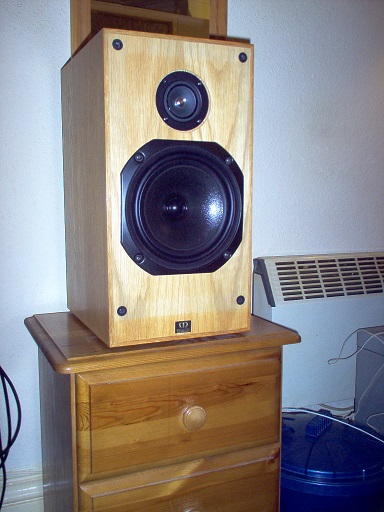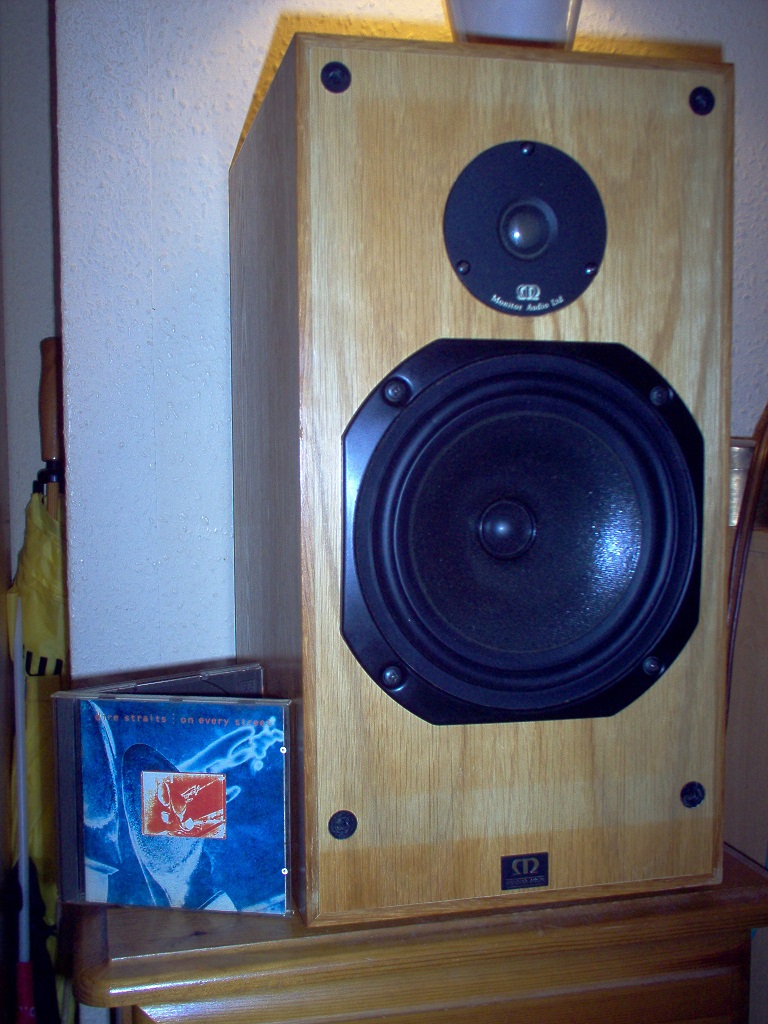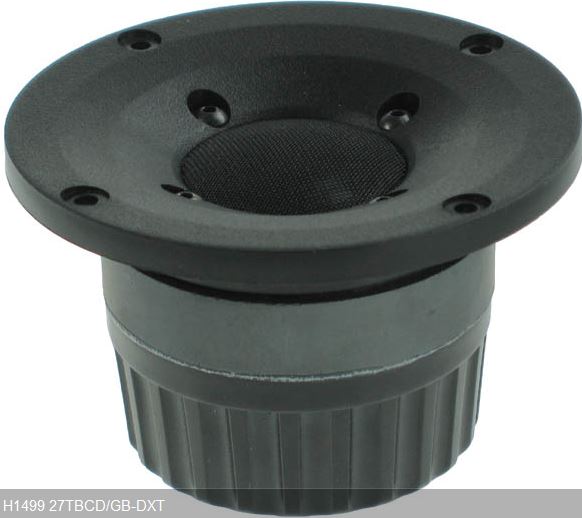My problem with the idea of very early reflections adding, lets call it, some 'spice' to the recording, is that it adds the same spice to everything you play whether it is warranted or indeed even appropriate.
Would you add a particular cooking spice intended for fish to everything you ate even if it was a bar of chocolate or a peanut butter sandwich ? No.
I understand the analogy, but I think it doesn't apply.
All rooms add something to the sound. A special room adds a special flavor.
When you enter a specially treated room, you immediately notice the room is different than a normal room.
The only room which does not add anything to the sound, is an anechoic chamber. It makes for a very interesting listening environment, but I doubt it is what most people would enjoy. Is it accurate? Perhaps, in a way. It is stereo in its purest form, with all its limitations high-lighted. Is this what hifi is supposed to be about?
To me, the best rooms are those that don't draw attention to themselves. Of course, those rooms have a particular acoustic signature like every other room, but a human listener adapts to the acoustics of the room and (above Schroeder) simply hears the loudspeaker/recording.
I think it does apply in some cases, at least for the rooms/systems that have reflections arriving in the ~0-7 ms after the main peak. They really skew the imaging queues that we percieve, and yes, very similar effects on all material being played.
Once the timed reflections get past the first 7-9 ms, these effects are much less. Meaning the perceived imaging changes between songs will largely be determined by the material being played.
One thing I think is beneficial about early reflections (somewhere between 7 and 25 ms, depending on its frequency content) is they soften the stereo cross talk negativities.
This stereo cross talk is probably quite noticeable in an anechoic listening space. I wouldn't know, I never had that luxury. I did notice these stereo cross talk side effects in my own room after reducing all reflections within the first 20 ms after the main peak.
Once the timed reflections get past the first 7-9 ms, these effects are much less. Meaning the perceived imaging changes between songs will largely be determined by the material being played.
One thing I think is beneficial about early reflections (somewhere between 7 and 25 ms, depending on its frequency content) is they soften the stereo cross talk negativities.
This stereo cross talk is probably quite noticeable in an anechoic listening space. I wouldn't know, I never had that luxury. I did notice these stereo cross talk side effects in my own room after reducing all reflections within the first 20 ms after the main peak.
So studio generated sounds are not "real source"?
I do not want to start any philosophical debate.
It suffices to say that "reality" of "generated sounds" differs significantly from "reality" of sound sources existing in real space.
I'm not sure the 'I am there vs They are here' dichotomy actually exists, at least not for me.
The best stereo can provide in my experience is the audio equivalent to an open window into the recording space
my experience also
My problem with the idea of very early reflections adding, lets call it, some 'spice' to the recording, is that it adds the same spice to everything you play whether it is warranted or indeed even appropriate.
when that spice is spaciousness then for me it's better to have spaciousness that is samey because it comes from the room reflections - which happens when the recording itself is dry - than to have no spaciousness
because spaciousness is a requirement of realism of sound reproduction
Last edited:
How many times has this been discussed in this thread now? Or was it another (similar) thread? Bottom line as I see it, my listening room is also my lounge, I make compromises, it is probably one of the reasons I'm happiest with dipoles, a simple compromise, so long as tripping over them all the time is something you can live with.
I, for one, am happy this discussion came along. Trying to listen to all the differing opinions I was inspired to do some experiments that gave me some interesting results.
🙂
🙂
I've a question for you folks that is about crossover slopes (shock horror). I use active LR4 at 125Hz at the mo, twixt my wideband and woofer, I've recently bought a digital xover with easy to screw with parameters, up to a ludicrous 48dB slope, butterworth, bessel and LR, what should I do??
Assuming your drivers extend flat an octave or so past the crossover point I see no obvious reason that anything would have advantages over LR4 but why not try a few?
I do not want to start any philosophical debate.
It suffices to say that "reality" of "generated sounds" differs significantly from "reality" of sound sources existing in real space.
That's like saying: "Red looks different from yellow because it is red."
It is clear to me that you do not consider studio work to be "real" recordings and that you are only interested in aspects of the problem that yield spaciousness and "realism" in "field" recordings. That's fine, but I do take offense at the implication, always present in your comments, that the music I like - studio work - is not relevant or important.
It is clear to me that you do not consider studio work to be "real" recordings and that you are only interested in aspects of the problem that yield spaciousness and "realism" in "field" recordings. That's fine, but I do take offense at the implication, always present in your comments, that the music I like - studio work - is not relevant or important.
I'm sorry. That was not my intention.
For my part I have to say that I felt offended many times here by suggestions that what I liked couldn't be considered HiFi because of inaccurate (through increased spaciousness and ASW) reproduction of studio work.
It seems that there are two ideas of HiFi and two corresponding approaches. One is that HiFi is about realistic sound reproduction and the other that it is about accurate sound reproduction.
Let's agree to disagree.
We don't disagree, there are two. Lets just be clear about our biases. I always have been.
If the record producer did not want "increased spaciousness and ASW" then adding it is inaccurate, although many like it. It's still not accurate. This is at the root of the disagreement - here in MI we call it "preference" versus "reference". Some believe that "preference" rules, others "reference". You are on one side, I am on the other, I don't think that you would disagree with that. I don't.
What annoys me is the continued bias by many that Hi-Fi means creating realism of a recorded venue, usually symphonic. Hi-Fi is much more than that and people who have the aforementioned bias should get out more and widen their musical horizons.
If the record producer did not want "increased spaciousness and ASW" then adding it is inaccurate, although many like it. It's still not accurate. This is at the root of the disagreement - here in MI we call it "preference" versus "reference". Some believe that "preference" rules, others "reference". You are on one side, I am on the other, I don't think that you would disagree with that. I don't.
What annoys me is the continued bias by many that Hi-Fi means creating realism of a recorded venue, usually symphonic. Hi-Fi is much more than that and people who have the aforementioned bias should get out more and widen their musical horizons.
Last edited:
TBH, gedlee, most of us who actually build stuff know that everything is a trade-off.
IMO, there are two sorts of loudspeaker. The narrow dispersion type that is more like headphone listening in any room:

Or the wide dispersion type that is just plain awful in a lively room:

There are many routes to narrow dispersion. Like this vaguely waveguided SEAS DXT metal dome:

A bit of mix and match with that outrageously cheap Monacor HT-22/8 cone tweeter that I so love. Everybody loves a simple crossover. It's easier to build. But really we have no reason at all to think that simple crossovers are particularly good. The distortion always kicks in. I have tried a lot of stuff. And electrical BW3 or LR4 just sounds terrific to me. It ends up nearer LR6 on acoustic slopes.
IMO, there are two sorts of loudspeaker. The narrow dispersion type that is more like headphone listening in any room:
Or the wide dispersion type that is just plain awful in a lively room:
There are many routes to narrow dispersion. Like this vaguely waveguided SEAS DXT metal dome:
A bit of mix and match with that outrageously cheap Monacor HT-22/8 cone tweeter that I so love. Everybody loves a simple crossover. It's easier to build. But really we have no reason at all to think that simple crossovers are particularly good. The distortion always kicks in. I have tried a lot of stuff. And electrical BW3 or LR4 just sounds terrific to me. It ends up nearer LR6 on acoustic slopes.
The OB Eikona drops off very rapidly, thinking of raising xover but the combination is measuring quite flat(ish)Assuming your drivers extend flat an octave or so past the crossover point I see no obvious reason that anything would have advantages over LR4 but why not try a few?
About field vs studio recordings - neither group is consistent!
There are many, many ways to record an orchestra, instruments and voices in a hall or in a studio. Most studio recordings are actually compiled from several different recordings in different studios and personnel. Then add various effects and delays etc. Then add the personal taste of the recording engineer, the mixer and the producer... An still we have only 2 channel stereo (or 5.1) to play with!
David Griesinger is the expert in sound and sound reproduction acoustic analysis, well worth studying his writings! http://www.davidgriesinger.com/
Here is an article by him about early reflections
There are many, many ways to record an orchestra, instruments and voices in a hall or in a studio. Most studio recordings are actually compiled from several different recordings in different studios and personnel. Then add various effects and delays etc. Then add the personal taste of the recording engineer, the mixer and the producer... An still we have only 2 channel stereo (or 5.1) to play with!
David Griesinger is the expert in sound and sound reproduction acoustic analysis, well worth studying his writings! http://www.davidgriesinger.com/
Here is an article by him about early reflections
The OB Eikona drops off very rapidly, thinking of raising xover but the combination is measuring quite flat(ish)
If the rapid drop off is due to the acoustic short circuit of the OB it might be wise to move the xover point up a bit and/or steepen the high pass.
Those things are not cheap and better safe than sorry unless you trust yourself not to get carried away with the vol control or if it sounds (or measures) worse.
What annoys me is the continued bias by many that Hi-Fi means creating realism of a recorded venue, usually symphonic. Hi-Fi is much more than that and people who have the aforementioned bias should get out more and widen their musical horizons.
^^^This^^^
TBH, gedlee, most of us who actually build stuff know that everything is a trade-off.
After building speakers for almost 50 years, I got tired of trade-offs and only wanted to find the optimum design for what I am looking for. After you do this for a couple more decades you too will probably want to do the same.
Do you use headphones? Can they be made to give an accurate reproduction or is there always that in the head feeling?
- Status
- Not open for further replies.
- Home
- Loudspeakers
- Multi-Way
- Well I suppose the shallow vs. steep argument will just go on and on